Cusco DIY
The thing in Cusco which struck me the most is the magnificent light, the clear air, the blue sky. The city is located 3360 meters above sea level
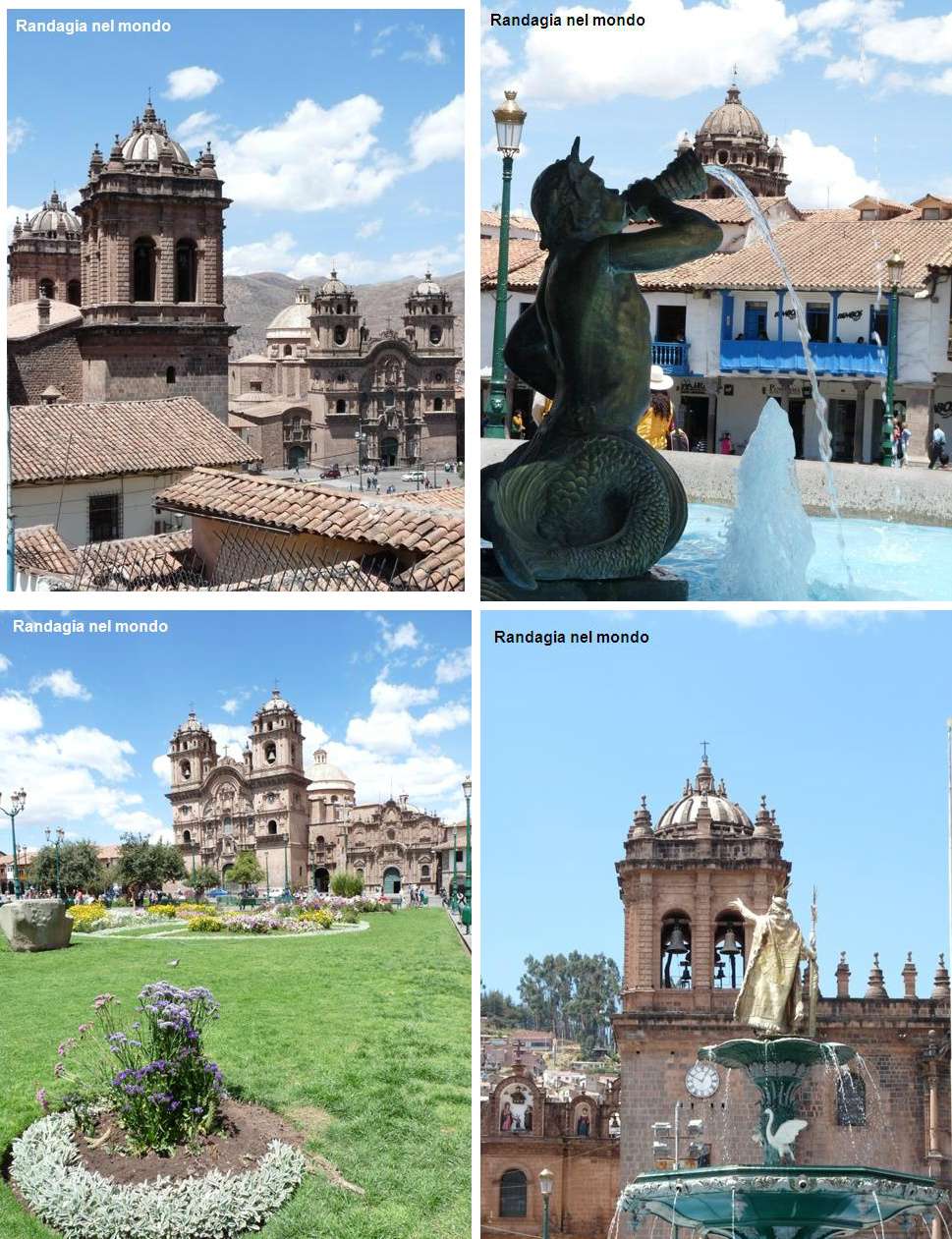
t the arrival the soroche is not any longer a problem for me, because it’s almost three weeks I go around at these altitudes, or even more. Shortness of breath, however, is constant, with all those stairs, and at night every now and then I still lack oxygen. This sensation is hard to explain to those who have never tried it : imagine you’re eating, with stuffy nose due to a cold. You get the idea?
This is one of the sensations given by soroche, one of nice ones, because then it might happen something worse, headache (to me) and if you are unlucky even sickness, vomit, and the breakage of some capillaries in the nose.
Almost all hostels and hotels provide hot water and coca leaves. Is it useful? I would say not much. All the other side effects related to staying in this city are instead very pleasant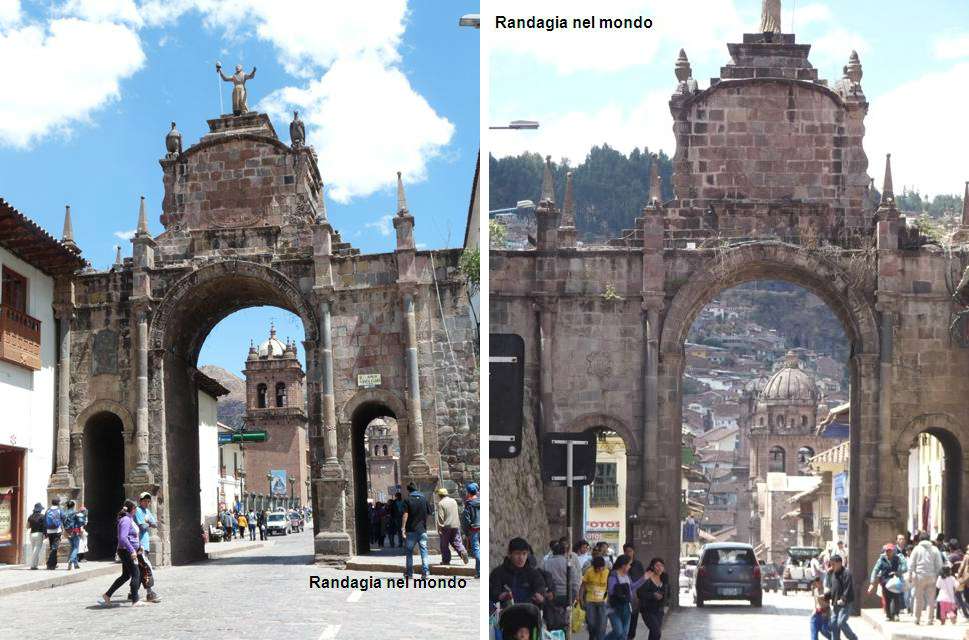
I spend eight days here, from 8/29 evening to 9/6 morning, including one night in Aguascalientes.
I attend excursions bought in the Plaza de Armas agencies to visit the surroundings, I visit the museums, the churches, the most important buildings, and I get lost at times in its narrow streets, with the nose up to watch the infinitely blue sky, fluffy clouds, the wooden balconies same color of the sky, the white houses walls same color of the clouds

The bright colors of some women dressed in the traditional way remind me from time to time to look at the horizontal level
The original idea was to spend much less time in Cusco and sleep also in Ollantaytambo and other places of the Sacred Valley. Once I arrived I felt much more comfortable to hold Cusco as a base.
The Inca empire’s capital is well aware of its charm and makes pay a high price for its attractions. However, I list herewith a couple of places which can be visited for free. One is the Scotiabank building (Calle Maruri), which bought and restored an Inca palace, and made it his headquarters. Inside, the Puca Marca museum, and an exhibition of Martin Chambi, a local famous photographer.
http://martinchambi.org/index.htm
Another one is the Direccion Regional de Cultura Cusco, Arequipa corner on Calle Maruri, ruins and archeological finds.
For everything else, there is the “boleto turistico”, 130 PEN, valid 9 days, 16 sites, or 70 PEN, validity 2 days, 8 sites. Worth spending 130 PEN? Perhaps some of the museums are not unmissable, and some have the same type of objects, but I think that, since you arrived so far, and most probably once in a lifetime, it’s not the case to be unnecessarily stingy, maybe you can try to save money on other subjects (the hotel). The museums are interesting because they expose artifacts of pre and Inca times, and the signsboards give a minimum of information about the peoples who inhabited these lands. At the museum in the Crikancha site there are interesting panels that explain the difference between the religious and philosophical worldview of the Incas and the Christians.
There is also a religious boleto, for churches, however, I decide to pay from time to time only the ones which are interesting to me. To tell the truth for Italian standards these churches are not so special. The funny thing is that it is absolutely forbidden to take pictures inside, not even by paying a surtax. The furnishings are very baroque, and the Cusco School of painting is famous. I see a cat sleeping peacefully curled on the altar of the Company of Jesus Church (10 PEN entrance fee). So cute! The view enjoyed from the bell towers on the Plaza de Armas is remarkable (and here I take pictures). 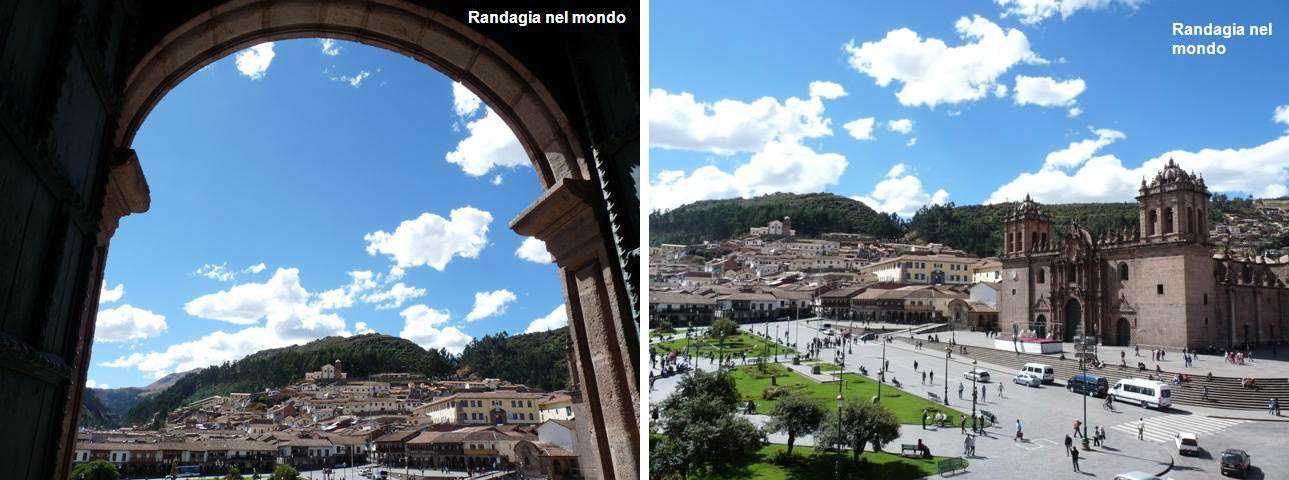 This is the only church where I paid to entry. The only church instead, where I managed to get in without paying was the one next to the Museum of Santa Catalina but even here, despite the absence of signs, I was forbidden to take pictures. Then I slipped into the cathedral during a function giving a peek.
This is the only church where I paid to entry. The only church instead, where I managed to get in without paying was the one next to the Museum of Santa Catalina but even here, despite the absence of signs, I was forbidden to take pictures. Then I slipped into the cathedral during a function giving a peek.
All the old town is wonderful, I point out the things that struck me most.
The climb to San Blas, the workshops of artists
Plaza de Armas, obviously
The Plazoleta Nazarena and the pedestrian alleys which lead to the Plaza de Armas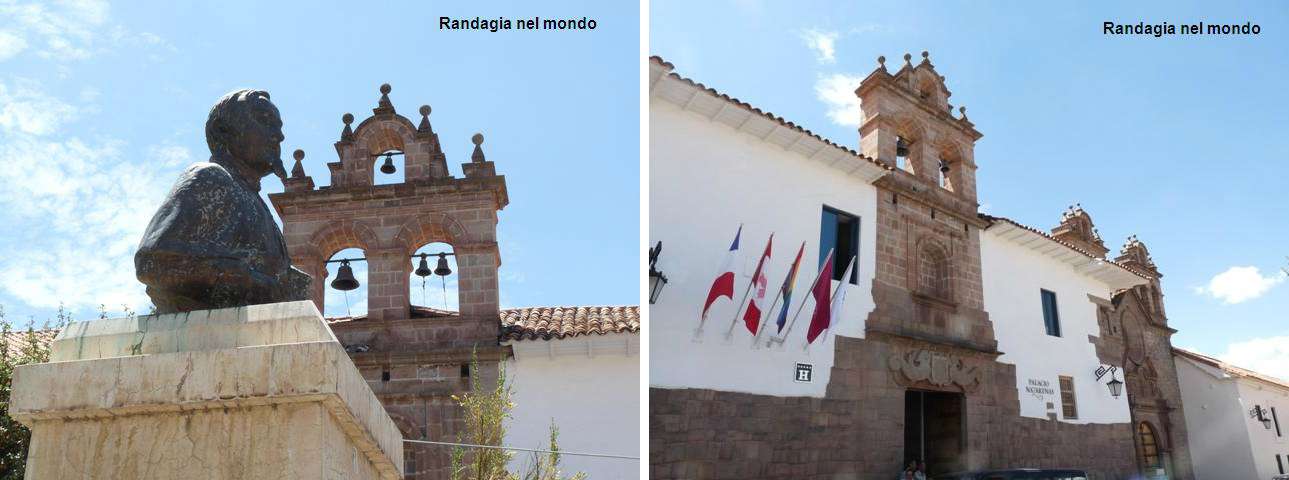
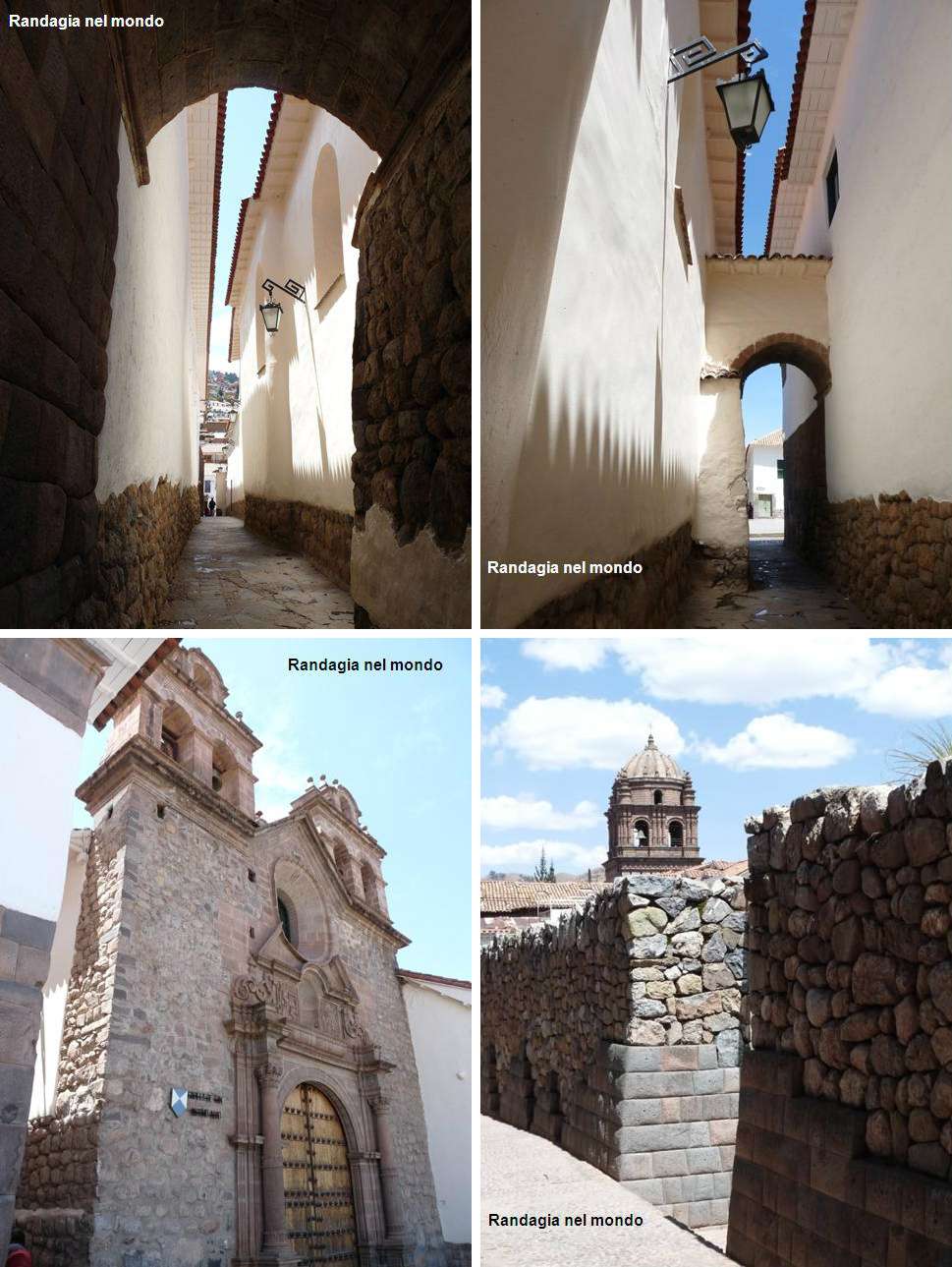
The Coricancha, an Inca temple (overflowing gold, before the Spaniards arrival) on whose ruins the convent of Santo Domingo was built
Eating at Cusco
The central market of San Pedro offers various merchandise, souvenirs and inexpensive meals, although the hygiene sometimes is missing and not particularly nice smells sometimes are around in the air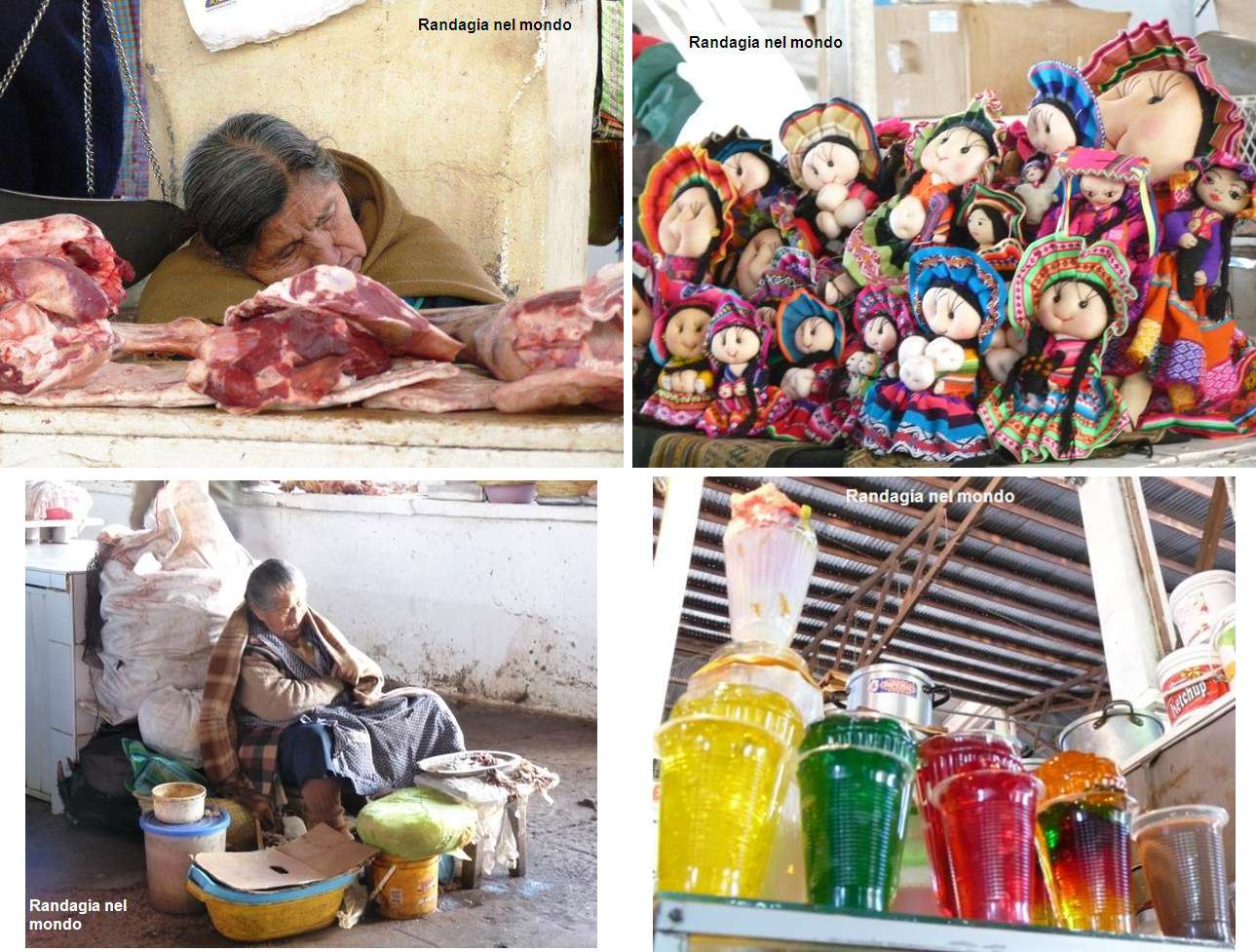
Here a cup of tea costs 1 PEN, an Inca potato and cereal soup 2.5 PEN, a fresh fruit smoothie 3 PEN, 2 PEN a very good cake at the very busy Yoni stall. Alongside, the Cascaparo market.
The restaurants are quite expensive, yet every day, at lunch, they propose the so-called “almuerzo” at 8/9 PEN. I tried Ego’s, near Santa Catalina (9 PEN), attended only by Peruvians
In the evening is a bit more difficult to save money, however Haylly in Calle Plateros has a fixed tourist menu at 12 PEN, Pachamama (Calle Maruri) costs 15 PEN and it is better, then there is a self-service buffet at Indian Restaurant Maykana in Avenida del Sol (15 PEN)
I recommend a place, very close to the Plaza de Armas, where a tea costs only 1.8 PEN, it is Cafe Extra, I think the street is the picturesque Calle Espaderos.
Sleeping at Cusco
It was difficult to find a place to sleep the first night in Cusco, because I arrived at 20.30, I searched a lot, and in the end I settled at the Andean Dream Hotel room, in a cold and ugly single, for 70 PEN, after some bargaining. In the hotel there are the better rooms, in fact reviews are positive on the web, maybe I was unlucky. Great breakfast with fresh juices. I then moved, after another search, the next morning, at the Hotel Casona Real, really very close to the Plaza de Armas, with an excellent value for money (see my review on Tripadvisor)
They offered it to me at 80 PEN, and, after having understood we both were talking about the same currency, I haggled 60 PEN for beautiful room nr. 102
For budget travelers, I point out how difficult it is to find heated rooms, and hot water in the showers in the cheapest accommodations.
Arrive and depart
I reached Cusco from Arequipa with a Civa daytime bus, 40 PEN for a comfortable cama. Same quality of Cruz del Sur, and costs much less. I did not find it at the travel agencies, I booked directly at the Arequipa bus station. Left at 8.00 and arrived at 20.00, Civa employees said it takes 10 hours, it was 12, but in Peru this is normal.
Why did I travel by day, wasting a whole day to be dedicated to Arequipa? Because I did not want to risk again to be stuck in the middle of nowhere, for the whole night, as it happened on the transfer from Puno to Arequipa. The road was blocked by an overturned truck, because of the ice. My caution was rewarded, as I learned later that even the night bus from Arequipa to Cusco was blocked at night. I did not take into consideration a flight, too expensive.
Instead, I had to pay 140 USD for the flight from Cusco to Lima, (TACA Avianca, bought online) because I did not want to stay 24 hours on a bus, not for the effort in itself, but rather to avoid waste of time and blocks for bad weather. If I had booked the flight in advance probably I would have paid it 115 USD.
The various agencies of Cusco advertise flights at amazing costs but when you go inside for a serious enquiry in the useful dates, then prices rise dangerously. The Avianca official agency located in Avenida del Sol can do the check in online.
Taxi from the bus terminal to the Plaza de Armas 7 PEN
Taxi from Plaza de Armas to airport 8 PEN
